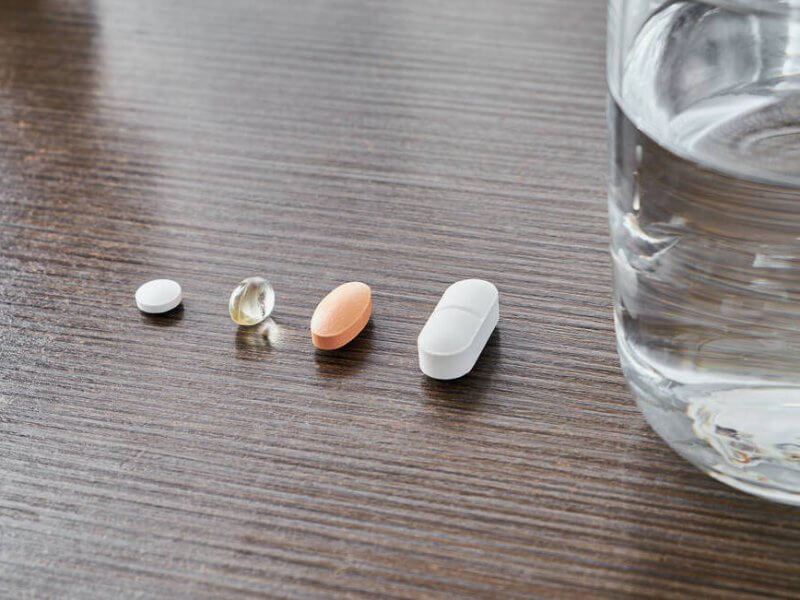79 total views
Introduction: Why People Mix Antidepressants and Modafinil
In modern life, the pressure to perform, succeed, and stay ahead has never been greater. Many individuals struggle with depression, anxiety, or burnout, leading to the widespread use of antidepressants. At the same time, Modafinil, originally designed to treat sleep disorders, has become popular among students, professionals, and even military personnel because of its reputation as a “wakefulness pill.”
It’s no surprise that some people consider combining antidepressants with Modafinil to get the best of both worlds: improved mood from antidepressants and sharper focus from Modafinil. Unfortunately, this combination isn’t as harmless as it may sound.
Drug interactions are complex, and the brain’s delicate balance of neurotransmitters can be disrupted when two powerful medications overlap. Understanding the risks is crucial before making a potentially life-threatening decision.
What antidepressants and Modafinil are, why people combine them, and the 7 shocking facts about this mix that everyone should know.
What Are Antidepressants?
Antidepressants are a class of medications designed to relieve symptoms of depression and related conditions, such as anxiety and obsessive-compulsive disorder (OCD). They work by regulating brain chemicals, primarily serotonin, dopamine, and norepinephrine, which play essential roles in mood, sleep, and focus.
Common Types of Antidepressants
There are several categories of antidepressants, each with its own mechanism of action:
- SSRIs (Selective Serotonin Reuptake Inhibitors) – Examples: Fluoxetine (Prozac), Sertraline (Zoloft).
- SNRIs (Serotonin-Norepinephrine Reuptake Inhibitors) – Examples: Venlafaxine (Effexor), Duloxetine (Cymbalta).
- TCAs (Tricyclic Antidepressants) – Older drugs like Amitriptyline, used less frequently due to side effects.
- MAOIs (Monoamine Oxidase Inhibitors) – Rarely prescribed due to strict dietary restrictions but effective in resistant depression.
- Atypical Antidepressants – Drugs like Bupropion (Wellbutrin), which target dopamine and norepinephrine.
Each type affects neurotransmitters differently, but all aim to correct chemical imbalances that contribute to depression.
How Antidepressants Work in the Brain
The human brain relies on chemical messengers called neurotransmitters to regulate mood. In depression, these chemicals may be out of balance, leading to feelings of sadness, fatigue, or hopelessness. Antidepressants don’t work instantly; instead, they gradually adjust neurotransmitter activity, often taking 4-6 weeks before noticeable improvements occur.
This slow adjustment is important to remember because mixing them with Modafinil, a fast-acting stimulant-like drug, can disrupt this process.
What Is Modafinil?
Modafinil, commonly sold under the brand name Provigil, is a prescription medication classified as a wakefulness-promoting agent. Unlike traditional stimulants such as Adderall or Ritalin, Modafinil is considered to have a lower risk of addiction and fewer side effects, though it’s not without risks.
Uses of Modafinil in Medicine
The FDA has approved Modafinil for the treatment of:
- Narcolepsy – A sleep disorder causing excessive daytime sleepiness.
- Shift Work Sleep Disorder (SWSD) – Sleep disruption caused by irregular work hours.
- Obstructive Sleep Apnea (as an adjunct therapy) – To help manage daytime fatigue even after using CPAP machines.
Off-label, Modafinil has gained popularity among students, entrepreneurs, and professionals who seek better concentration and extended working hours.
How Modafinil Affects the Brain
Modafinil increases levels of dopamine, norepinephrine, histamine, and orexin, chemicals that control alertness, energy, and motivation. Unlike caffeine, it provides a smooth wakefulness effect without the jitteriness of traditional stimulants.
But because it influences dopamine (the same neurotransmitter targeted by some antidepressants), there’s potential for dangerous interactions when combined.
Why Some People Combine Antidepressants and Modafinil
Despite the risks, many individuals still combine the two. The motivations vary but often include:
Off-Label Use and Academic Pressure
Students and professionals under extreme academic or work stress may use antidepressants for emotional stability while adding Modafinil for mental sharpness and stamina.
Mental Health and Productivity Boost
Those battling depression-related fatigue often look for something to “kick-start” their energy. Modafinil seems like the perfect companion to antidepressants boosting productivity while the antidepressant works in the background.
Unfortunately, this cocktail can lead to unpredictable and dangerous results.
7 Shocking Facts About Mixing Antidepressants and Modafinil
Mixing antidepressants with Modafinil is far from safe. Here are seven critical dangers everyone should know:
Fact 1: Increased Risk of Serotonin Syndrome
When Modafinil interacts with SSRIs or SNRIs, it can elevate serotonin to dangerously high levels, leading to serotonin syndrome a potentially fatal condition marked by confusion, fever, tremors, and seizures.
Fact 2: Dangerous Impact on Sleep Cycles
Antidepressants already affect sleep architecture. Adding Modafinil can worsen insomnia, leaving the brain overstimulated and unable to repair itself through deep sleep.
Fact 3: Mood Swings and Emotional Instability
Some people report heightened irritability, aggression, or anxiety when combining the two drugs, undermining the very purpose of antidepressant treatment.
Fact 4: Possible Heart and Blood Pressure Issues
Both antidepressants (especially SNRIs) and Modafinil increase blood pressure and heart rate, putting strain on the cardiovascular system.
Fact 5: Reduced Effectiveness of Antidepressants
Modafinil speeds up liver enzyme activity, which can cause the body to metabolize antidepressants faster, reducing their effectiveness.
Fact 6: Potential for Dependence and Misuse
Although Modafinil has a low abuse profile, pairing it with antidepressants can create a reliance on the combination to feel “normal” or productive.
Fact 7: Limited Research and Unknown Long-Term Risks
Most clinical studies have not tested the long-term combination of Modafinil and antidepressants. The lack of research means users are essentially experimenting on themselves.
Safe Alternatives to Mixing Antidepressants and Modafinil
For those seeking better energy and mood management without risky drug combinations, consider these safer approaches:
Cognitive Behavioral Therapy (CBT)
Proven to be as effective as medication in some cases, CBT helps individuals retrain thought patterns and develop healthier coping mechanisms.
Natural Nootropics
Supplements like L-theanine, Rhodiola Rosea, and Omega-3 fatty acids can improve focus and energy with fewer risks.
Healthy Lifestyle Adjustments
Simple changes such as regular exercise, a balanced diet, proper hydration, and consistent sleep schedules can dramatically improve mood and energy.
Expert Recommendations and Medical Guidelines
Doctors generally advise against combining Modafinil with antidepressants unless under close medical supervision. If a physician does prescribe both, strict monitoring is necessary.
When to Consult a Doctor
Seek medical advice immediately if you notice:
- Extreme agitation or anxiety
- Rapid heart rate
- Severe insomnia
- Unusual mood swings
Monitoring and Safe Use Practices
- Never self-prescribe Modafinil if already on antidepressants.
- Always inform your doctor of every medication and supplement you’re taking.
- Regular blood pressure and heart monitoring may be required.
For additional medical insights, check resources such as the National Institute of Mental Health.
FAQ
1. Can you take Modafinil with SSRIs safely?
Not without risk. The combination may trigger serotonin syndrome or reduce antidepressant effectiveness.
2. Does Modafinil help with depression?
Some studies suggest it may help with depression-related fatigue, but it is not an approved antidepressant.
3. Is Modafinil addictive?
It’s less addictive than stimulants like Adderall, but misuse and psychological dependence are possible.
4. What are the signs of serotonin syndrome?
Confusion, high fever, agitation, sweating, muscle rigidity, and seizures. Immediate medical help is required.
5. Can lifestyle changes replace Modafinil?
Yes, exercise, diet, and CBT can be powerful tools for improving focus and energy.
6. Should I stop my medication if I feel side effects?
Never stop abruptly. Always consult your doctor before changing or discontinuing any medication.
Conclusion
While the appeal of combining antidepressants with Modafinil is understandable, the risks far outweigh the potential benefits. From serotonin syndrome to cardiovascular complications, the dangers are significant and often unpredictable.
If you’re struggling with depression and fatigue, consult your doctor about safer alternatives. There are many proven ways to improve focus and mood without experimenting with risky drug combinations.
Ultimately, your brain and body deserve careful, evidence-based treatment not shortcuts that may cause long-term harm.
‼️ Disclaimer: The information provided in this article about modafinil is intended for informational purposes only and is not a substitute for professional medical consultation or recommendations. The author of the article are not responsible for any errors, omissions, or actions based on the information provided.
References:
- Ballon JS, Feifel D. A systematic review of modafinil: potential clinical uses and mechanisms of action. J Clin Psychiatry. 2006
- McClellan, K. J., & Spencer, C. M. Modafinil: A review of its pharmacology and clinical efficacy in the management of narcolepsy. CNS Drugs, 311–324. https://doi.org/10.2165/00023210-199809040-00006 . 1998.
- Willavize, S. A., Nichols, A. I., & Lee, J. Population pharmacokinetic modeling of armodafinil and its major metabolites. https://doi.org/10.1002/jcph.800 . 2016
- U.S. Food and Drug Administration. PROVIGIL. U.S. Department of Health and Human Services. https://www.accessdata.fda.gov/drugsatfda_docs/label/2015/020717s037s038lbl.pdf . 2015
- Gilleen, J., Michalopoulou, P. G., Reichenberg, A., Drake, R., Wykes, T., Lewis, S. W., & Kapur, S. Modafinil combined with cognitive training is associated with improved learning in healthy volunteers a randomised controlled trial. European Neuropsychopharmacology. 529–539. https://doi.org/10.1016/j.euroneuro.2014.01.001 . 2014
- Greenblatt, K., Adams, N. Modafinil. StatPearls Publishing. https://www.ncbi.nlm.nih.gov/books/NBK531476/ . 2025
- Oliva Ramirez A, Keenan A, Kalau O, Worthington E, Cohen L, Singh S. Prevalence and burden of multiple sclerosis-related fatigue: a systematic literature review. https://doi.org/10.1186/s12883-021-02396-1 . 2021.
- Mereu, M., Bonci, A., Newman, A. H., & Tanda, G. The neurobiology of modafinil as an enhancer of cognitive performance and a potential treatment for substance use disorders. https://doi.org/10.1007/s00213-013-3232-4 . 2013
- Ciancio A, Moretti MC, Natale A, Rodolico A, Signorelli MS, Petralia A. Personality Traits and Fatigue in Multiple Sclerosis: A Narrative Review. Journal of Clinical Medicine. https://doi.org/10.3390/jcm12134518 . 2023
- Natsch, A. What makes us smell: The biochemistry of body odour and the design of new deodorant ingredients. CHIMIA International Journal for Chemistry. https://doi.org/10.2533/chimia.2015.414 . 2015
- Hamada, K., Haruyama, S., Yamaguchi, T., Yamamoto, K., Hiromasa, K., Yoshioka, M., Nishio, D., & Nakamura, M. What determines human body odour? Experimental Dermatology. https://doi.org/10.1111/exd.12380 . 2014


